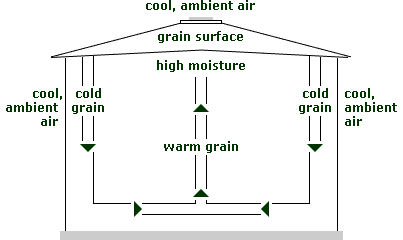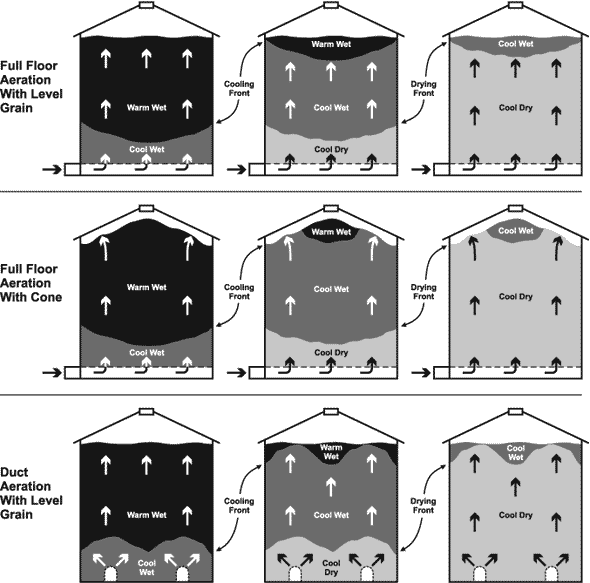Flax TIPS: Six Things to Do to Prevent Heated Flax
The first reports of grain spoilage in bins often happen in December. Often the lack of snow on one particular bin roof is a sign of trouble.
-
What is a safe Moisture Content (%)? Anything over 10% is considered tough and over 13.5% is damp or high moisture. For long-term storage, flax seed should be brought down to 8.5% moisture.
-
Monitor often. Temperature and moisture of binned flax should be monitored every two weeks after binning. You may think that with the cold air outside that the grain is more likely to be cool, but actually grain heating is more likely to occur when there is large temperature difference between the outside air and the temperature of the grain. This is because there is a stronger convection current through the bin. The high oil content of flax means it is more likely to spoil than cereals.
-
Watch out for hot spots. With use of aeration, flax at the bottom of the bin (close to the perforations) will be dry faster and can be cooler than flax higher up in the bin (Figure 1). The cool air warms as it passes over the warm, moist grain and then the warm air rises up through the centre of the bin. This creates hot spots. When it reaches the surface it can cause condensation to form. Drawing down the cone of grain to level can facilitate aeration (Figure 2).

Figure 1. The cycle of convection currents in bin-stored grain when ambient air outside the bin is cold and the grain is warm. (Source: Canada Grains Council) -
Turn the bin. Be prepared to turn the bin to move the drier flax seed from the bottom to the top of the bin to aid in more uniform drying of the grain.
-
Sample safely. When sampling for moisture and temperature, be sure to separately sample the bottom, middle and top of bin. From a safety standpoint, use safety ropes and have an assistant when you need to enter the top of a flax bin. The seed is slippery and there is a risk of quickly sinking into the flax and then suffocating.
-
Use caution with supplemental heat. Flax is dense in the bin and has a high static pressure (Think: it clings to you when dry). This means it is difficult to move air through. Target 0.75 cfm/ bu at least, especially when using supplemental heat. Anything less and you are only adding heat to wet grain. Not a good combination. One way to ensure this airflow is to create a less dense bin by not filling it up all the way. Try to keep the temperature of the air going into the grain between 10 and 15°C. Do not exceed 15°C. (Source: Joy Agnew – PAMI)

Figure 2. The movement of cooling and drying fronts through crops ventilated with air during autumn. (Source: Canada Grains Council)
For specific recommendation, see the November 2016 Flax Council of Canada ‘Tips’ article of flax harvest and storage at https://archive.flaxcouncil.ca/tips_article/flax-tips-harvesting-and-drying-damp-flax/
For more detailed information on grain aeration, visit:
Prairie Agricultural Machinery Institute http://pami.ca/wp-content/uploads/2013/09/Grain-Aeration-Factsheet.pdf
Canada Grains Council https://www.grainscanada.gc.ca/storage-entrepose/mta-stv-eng.htm



